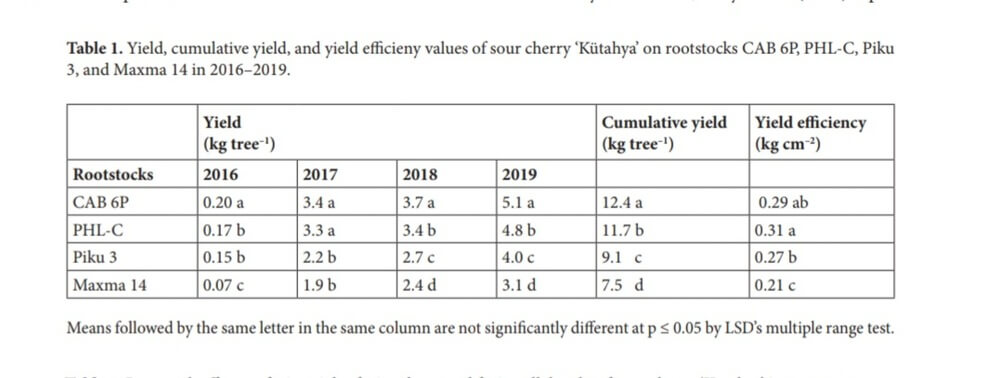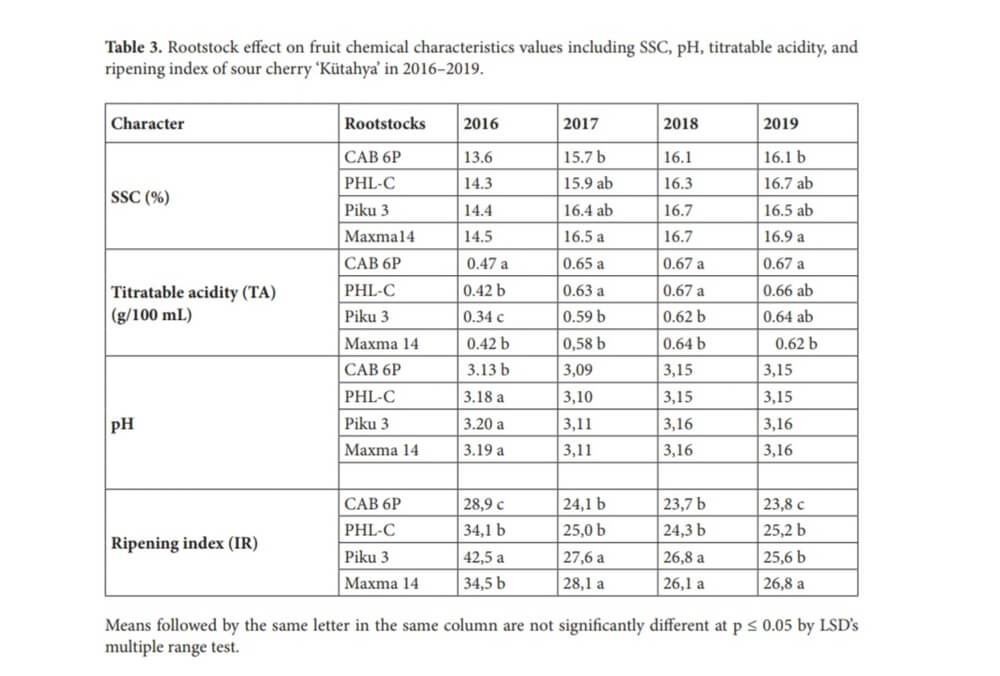Turkey is one of the most significant producers of sour cherries (Prunus cerasus L.), primarily of the cultivar "Kütahya." However, the production characteristics of sour cherry cultivars can be enhanced using a suitable rootstock, which can influence the growth and yields of trees to varying degrees.
Cherry cultivation in Turkey utilises seedlings of the mahaleb (Prunus mahaleb), wild cherry (Prunus avium), sour cherry (Prunus cerasus), and some clonal rootstocks. In general, seedling rootstocks are compatible with a variety of cherry cultivars and better acclimated to various soil types.
However, these rootstocks have a tendency to promote tree height, delaying crop production. To address these issues, clonal rootstocks with varying growth rates that can adapt to various ecological conditions are utilised. However, the effects of clonal rootstocks on the growth and development, yield, and fruit quality of "Kütahya" sour cherry have not been studied previously.
Therefore, this study was conducted to determine the effect of CAB 6P, Maxma 14, Piku 3, PHL-C, and SL-64 clonal rootstocks on the vegetative growth, yield, and fruit quality of the "Kütahya" sour cherry cultivar. In order to understand which was the most suitable clonal rootstock for successful sour cherry production in Bursa, Marmara Region (Turkey) this study was conducted from 2015 to 2019.
Rootstock effects on flowering period, ripening time, trunk diameter, trunk cross-sectional area, pruning waste, fruit weight and volume, fruit stalk length, soluble solids content, titratable acidity, pH, and ripening index were assessed.

No sour cherry trees on CAB 6P and PHL-C rootstocks perished during the duration of the research, whereas trees on SL-64 rootstock experienced an 87% mortality rate in the first year of the study. In general, CAB 6P rootstock promoted the greatest vigour, annual yield, and total yield.

PHL-C had the highest yield efficiency, but it was not substantially different from CAB 6P. The CAB 6P rootstock stimulated the greatest fruit weight and volume, whereas the Maxma 14 rootstock stimulated the least.
Furthermore, CAB 6P tended to increase fruit stalk length, whereas Piku 3 decreased it. The content of soluble solids was the greatest in fruit from trees grafted on Maxma 14, but there were no significant differences between the content of soluble solids in fruit from trees grafted on other rootstocks.

It was also found that CAB 6P and PHL-C rootstocks have a tendency to increase titratable acidity. Based on the results of this study, it can be concluded that CAB 6P is the best-adapted rootstock for establishing "Kütahya" sour cherry orchards in the Marmara region.
In conclusion, this study revealed that trees grafted onto the Maxma 14 rootstock induce lower vigour, productivity, and fruit weight in heavy and clayey soil conditions. In contrast, trees grafted onto CAB 6P rootstock exhibited greater vigour, yield, and fruit weight, resulting in greater agricultural productivity. In addition, SL 64 rootstock is not recommended for use in silt soil conditions due to the high mortality rate of grafted trees
Source: KOŞAR, MEVLÜT BATUHAN; KOŞAR, DİLAN AHI; and ERTÜRK, ÜMRAN (2023) "The effects of rootstocks on growth and development of sour cherry (Prunus cerasus L. cv. "Kütahya") in the growing conditions of Bursa," Turkish Journal of Agriculture and Forestry: Vol. 47: No. 1, Article 2. https://doi.org/10.55730/1300-011X.3059. Available at: https://journals.tubitak.gov.tr/agriculture/vol47/iss1/2.
Melissa Venturi
University of Bologna (IT)
Cherry Times - All rights reserved













